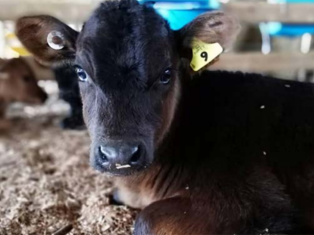Calving — Be a mate, update NAIT
Protect your farm and support lifetime traceability by fulfilling your NAIT obligations this calving season.
 Calving season is well underway, we know this is a busy time for farmers, but it’s also an important time to make sure that you are fulfilling your NAIT obligations.
Calving season is well underway, we know this is a busy time for farmers, but it’s also an important time to make sure that you are fulfilling your NAIT obligations.
Tracing farm animals throughout their lifetime means that if there is a biosecurity risk or a disease outbreak we can respond quickly and effectively. Doing this reduces the threat to your livelihood, and the time and money needed to trace and eliminate disease from infected livestock.
For some helpful guidance around calving this year, check out the links below.
NAIT obligations during calving
During calving season you must ensure:
- All calves are fitted with a NAIT tag before 180 days of birth (the tag should be in the centre of the right ear, between the two veins)
- All tagged calves are registered in the NAIT system within 7 days of tagging
- All calves are tagged and registered before their first off-farm movement.
We recommend using a scanner to register your animals.
If you're buying calves
If you’re buying calves, confirm with the seller:
- that they have completed an Animal Status Declaration (ASD) form
- what the calves' TB status is
- that the calves are tagged with a NAIT tag
- the NAIT number of the calves.
Remember to record a receiving movement in NAIT within 48 hours of the end of the day the calves arrive.
If you’re selling calves
Before you send your calves off-farm, make sure they're tagged correctly and registered in NAIT. Using NAIT tags in numerical order can help make registering the animals easier. Using a secondary tag, like a birth set, may also be helpful.
It's an offence to move calves without tagging and registering them first, unless they have an exemption. Bobby calves (under 30 days of age) going directly to slaughter from their birth farm are exempt. If you are moving them to any other location, you must tag and register them.
You also need to:
- prepare an ASD, which includes information about the TB status of your animals
- find out the NAIT location number of the buyer
- create a sending movement in NAIT within 48 hours of the end of the day the calves were sent (if you're sending to an accredited saleyard or meat processor, they will record the movement)
Remembering your NAIT obligations during this busy period helps set up your farm and New Zealand's biosecurity system for success.
Be a mate — update NAIT.

